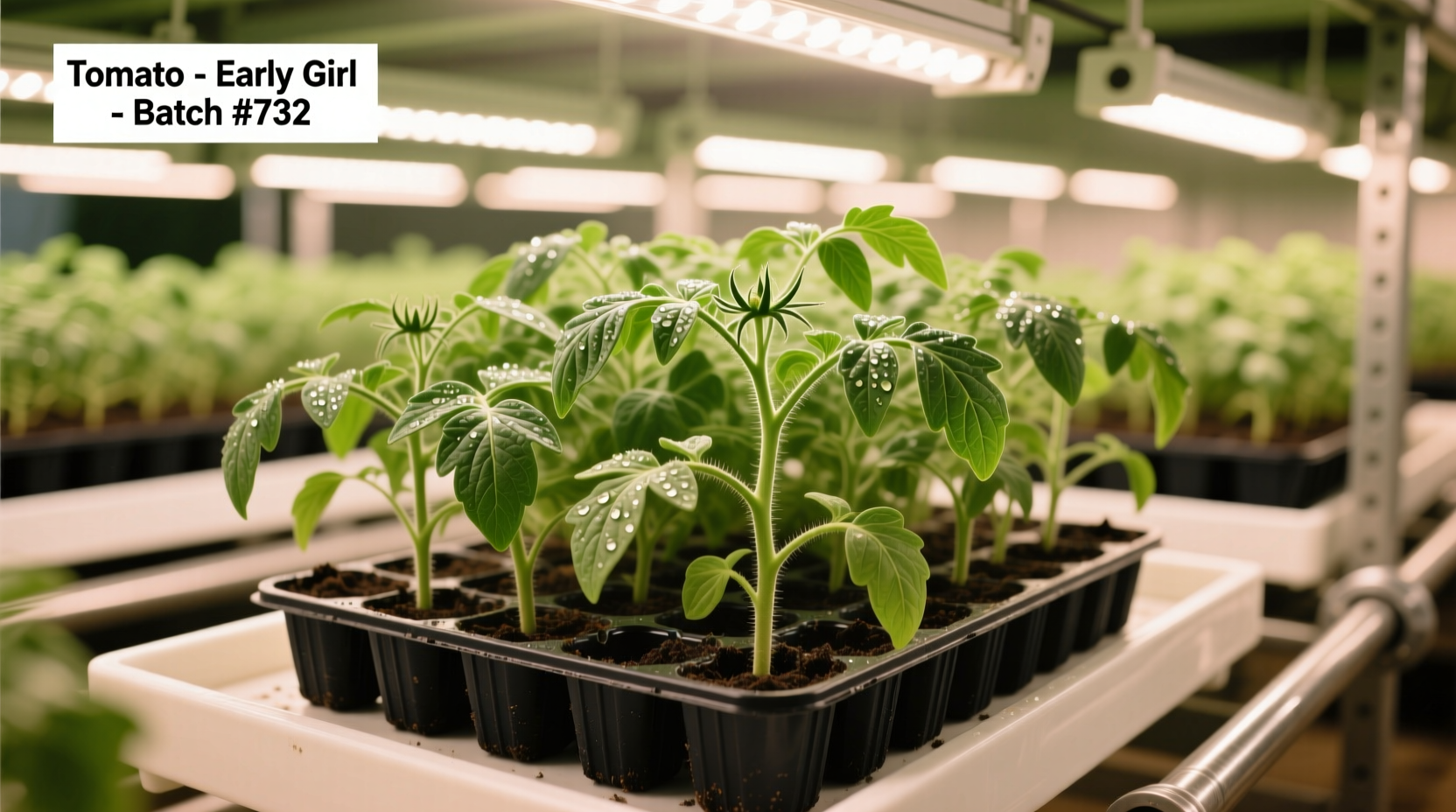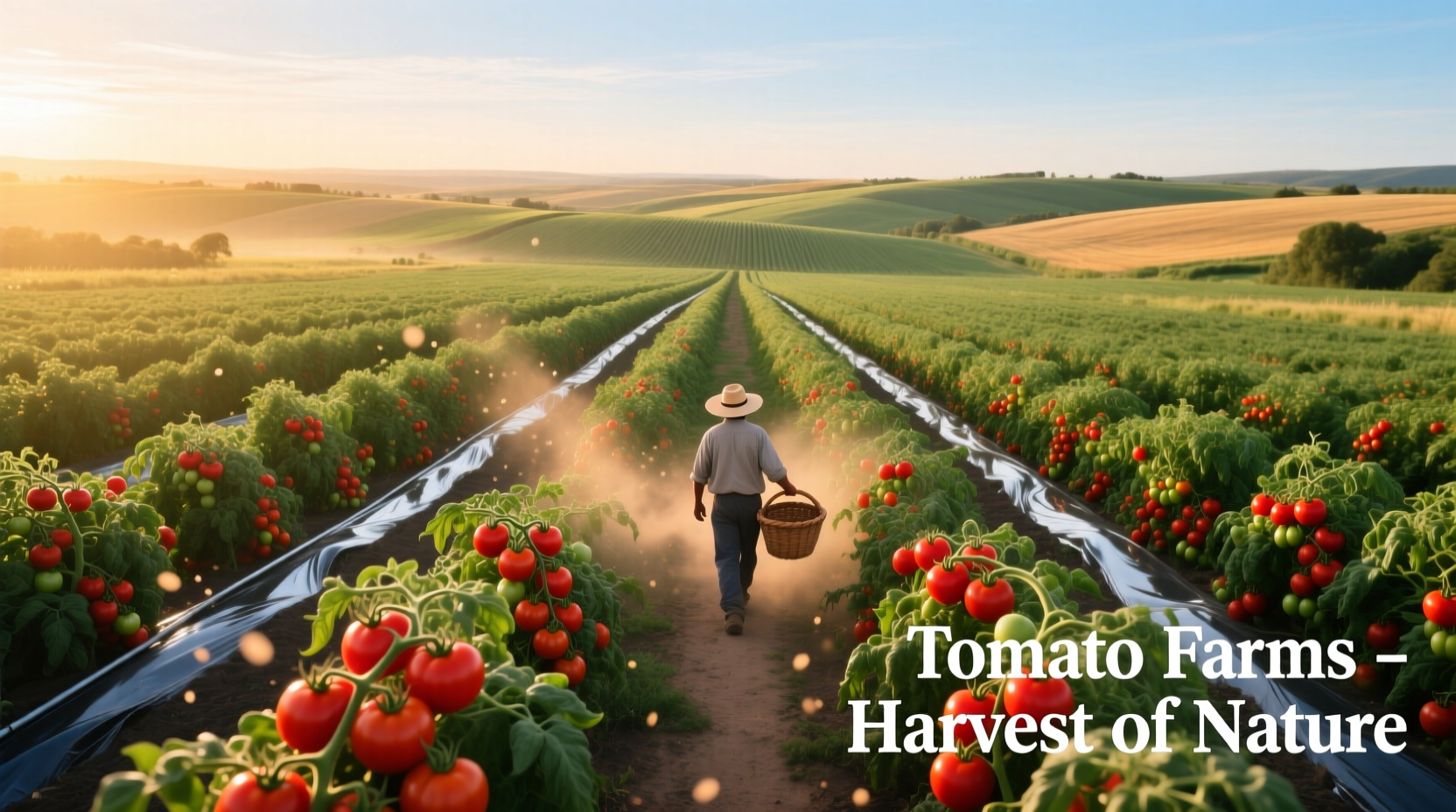Discover how tomato farms operate in today's agricultural landscape, from seed selection to supermarket shelves. This comprehensive guide reveals the science-backed practices behind successful tomato cultivation, current industry challenges, and innovations shaping the future of this essential crop.
Understanding Modern Tomato Farming Operations
Tomato farming has evolved from small-scale garden operations to sophisticated agricultural enterprises. Today's commercial tomato farms range from family-owned operations to large agribusinesses, each employing specialized techniques to maximize yield while maintaining quality. The global tomato market continues to expand, driven by consistent consumer demand for fresh and processed products.
Tomato Farming Evolution: A Historical Timeline
Tracing the development of tomato cultivation reveals significant advancements that have transformed this crop from a novelty to a staple:
1500s-1700s: Tomatoes introduced from Mesoamerica to Europe, initially grown as ornamental plants due to safety concerns
1800s: First commercial tomato farming begins in the United States, primarily for canning operations
Early 1900s: Development of specialized tomato varieties for mechanical harvesting
1960s: Introduction of hybrid varieties with disease resistance and uniform ripening
1990s: Adoption of precision agriculture technologies for irrigation and nutrient management
2010s-Present: Integration of sustainable practices, hydroponic systems, and AI-powered monitoring
Key Tomato Farming Practices by Growth Stage
Successful tomato farming requires careful attention at each stage of the plant's lifecycle. Here's what happens behind the scenes:
Seed Selection and Preparation
Modern tomato farms begin with strategic seed selection based on market demands, climate conditions, and disease resistance requirements. Most commercial operations use hybrid varieties developed specifically for their growing region. Seed treatment processes enhance germination rates and provide early protection against soil-borne pathogens.
Nursery Management
Seedlings typically spend 4-6 weeks in controlled nursery environments before transplanting. Temperature, light exposure, and nutrient levels are precisely managed to produce strong, healthy transplants. Many farms now use automated systems for watering and monitoring seedling development.

Field Preparation and Planting
Proper soil preparation is critical for successful tomato farming. Most operations follow this sequence:
- Soil testing and amendment based on previous crop history
- Bed formation with appropriate spacing for machinery access
- Drip irrigation line installation for efficient water delivery
- Plastic mulch application to control weeds and maintain soil temperature
- Precise transplanting using mechanical planters
Regional Farming Challenges and Contextual Limitations
Tomato farming faces different challenges depending on geographic location and climate conditions. Understanding these context boundaries helps explain regional production differences:
| Region | Primary Challenges | Adaptation Strategies |
|---|---|---|
| California | Water scarcity, high labor costs | Drip irrigation, mechanized harvesting, shade cloth systems |
| Florida | Soil-borne diseases, hurricane risks | Fumigation alternatives, raised beds, windbreaks |
| Mexico | Frost protection, market access | Protected agriculture, cooperative marketing |
| Mediterranean | Water management, heat stress | Drought-tolerant varieties, precision irrigation |
According to the USDA Agricultural Research Service, tomato farmers in different regions must adapt their practices to local conditions while maintaining food safety standards and meeting market requirements. These contextual limitations significantly impact production costs, yield potential, and available farming methods.
Sustainable Practices Transforming Tomato Farming
Environmental concerns and consumer demand are driving significant changes in tomato farming approaches. Leading operations now integrate multiple sustainable practices:
Water Conservation Techniques
Modern tomato farms have reduced water usage by 30-50% through:
- Soil moisture monitoring systems
- Variable rate irrigation technology
- Recycled water systems
- Drought-tolerant variety development
Pest Management Innovations
Integrated Pest Management (IPM) has become standard practice, reducing chemical pesticide use while maintaining crop protection. Successful strategies include:
- Beneficial insect introduction programs
- Precision application technology
- Disease-resistant varieties
- AI-powered pest detection systems
Consumer Trends Influencing Tomato Farming
Understanding market demands helps tomato farmers make strategic decisions. Recent consumer research from the Food and Agriculture Organization reveals important trends:
- 68% of consumers prioritize locally grown tomatoes during peak season
- 52% are willing to pay premium prices for sustainably grown tomatoes
- 41% actively seek out specific heirloom varieties for flavor diversity
- 33% consider year-round availability essential for their purchasing decisions
These preferences directly impact farming decisions regarding variety selection, production methods, and marketing approaches. Farms that align with consumer values while maintaining economic viability are best positioned for long-term success.
Future Directions in Tomato Farming
Several emerging trends show promise for the future of commercial tomato production:
Technology Integration
Advanced technologies are transforming traditional farming practices:
- AI-powered yield prediction models
- Automated harvesting systems
- Precision nutrient application
- Blockchain for traceability
Climate Adaptation Strategies
As weather patterns become more unpredictable, tomato farms are developing resilience through:
- Diversified variety portfolios
- Protected agriculture expansion
- Water recycling systems
- Soil health improvement programs
Practical Insights for Tomato Consumers
Understanding tomato farming helps consumers make informed choices. When selecting tomatoes, consider these factors:
- Seasonality: Peak tomato season varies by region but generally runs June-October in the Northern Hemisphere
- Variety characteristics: Different types excel for specific uses (slicing, sauce, salad)
- Storage methods: Room temperature preserves flavor better than refrigeration
- Supporting local: Farmers markets often provide the freshest options during growing season
Frequently Asked Questions
How much land does a commercial tomato farm typically require?
Commercial tomato farms range significantly in size, with most operations dedicating 10-500 acres to tomato production. The average specialty crop farm in the United States uses approximately 150 acres for tomatoes, though many successful operations function effectively on smaller plots using intensive cultivation methods.
What's the typical yield per acre for commercial tomato farms?
Yield varies by region and production method, but most commercial tomato farms produce 25-40 tons per acre for fresh market tomatoes. Processing tomato varieties typically yield higher at 35-50 tons per acre. Advanced farming techniques and optimal conditions can push yields to 50+ tons per acre for fresh market production.
How do tomato farms manage pests without excessive chemical use?
Modern tomato farms use Integrated Pest Management (IPM) combining multiple strategies: beneficial insect introduction, disease-resistant varieties, precision application technology, crop rotation, and monitoring systems. Many operations have reduced chemical pesticide use by 40-60% while maintaining effective pest control through these integrated approaches.
What makes greenhouse tomato farming different from field production?
Greenhouse tomato farming offers controlled environment advantages including year-round production, precise climate control, reduced pest pressure, and water conservation through recirculation systems. While initial investment costs are higher, greenhouse operations typically achieve 2-3 times higher yields per square foot and can produce premium quality tomatoes with consistent flavor profiles regardless of external weather conditions.











 浙公网安备
33010002000092号
浙公网安备
33010002000092号 浙B2-20120091-4
浙B2-20120091-4